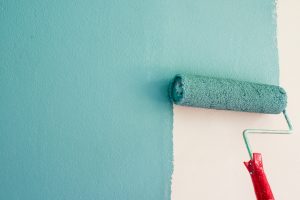
Primer vs. Paint and Primer in One: What Metro West Homeowners Need to Know
Posted on July 29, 2024
If you’ve tackled your own painting projects before, you know it can be a time-consuming process. From selecting the right paint to prepping the surface, priming, waiting for coats to dry, applying second coats, and cleaning up, the steps can add up quickly. It’s no wonder many homeowners seek shortcuts to cut down on time.
One such “shortcut” is using paints that boast “paint and primer in one.” These products, also known as 2-in-1 paint or self-priming paint, promise to skip the priming step and save time. But does it really work?
Understanding the Role of Primer

Primer plays a crucial role in the painting process. Think of it as preparing the surface for the best possible outcome. Primer aids in adhesion (especially on porous surfaces), covers stains, helps the paint apply and dry evenly, and seals surfaces for a smoother topcoat.
Paint and primer in one, however, isn’t actually a primer. This term refers to paint with a thicker final layer compared to regular paints. While it doesn’t provide the same adhesion as a primer, its thicker application can offer more coverage and make it easier to paint over existing colors.
When to Use Paint and Primer in One
2-in-1 self-priming paint can be a good option for some interior painting projects, such as refreshing walls in your bedroom or living room that are already in good condition. It can save you the step of applying primer, though it’s important to note that these paints are often more expensive.
The Traditional Approach: Separate Primer and Paint
Most professional painters in Metro West recommend using separate primer and paint. This traditional method is essential for surfaces where adhesion may be problematic, such as unfinished wood, masonry, metal, and new drywall. It’s also recommended for glossy, damaged, or stained surfaces. For exterior painting, especially in our variable New England weather, using a separate primer is crucial.
At CertaPro Painters of Metro West Massachusetts, we generally recommend using separate paint and primer for the best results. While 2-in-1 products can be convenient for quick touch-ups on well-maintained walls, the traditional method of priming and then painting usually provides superior outcomes.
If you aren’t sure what approach to take, or would rather leave your next painting project to the pros, don’t hesitate to contact us and our professional painting team at 781-296-6044 for any and all questions!
Looking for more Home Exterior tips? Check out our other home improvement articles!





